Masonic Gift Set Pocket Watch & Pendant
This is a Masonic Boxed Gift Set which contains a Gold and Silver Plated Pocket Watch with matching Pendant The watch has the Masonic G with Compasses the necklace and pendant has the same symbol in blue and gold on a white back ground the back of the pendant and necklace is silver The watch is in perfect working order The Gift Box is black with the words "The Best for You" The watch is 45mm in diameter with the chain 72 mm in length The Pendant is 25mm in diameter with the chain 72 mm in length The Dimensions of the box are 120 mm x 90 mm x 30 mm It is Excellent Condition Starting at one Penny...With No Reserve..If your the only bidder you win it for 1p....Grab a Bargain!!!!
Would make an Excellent Gift for anyone interested in Freemasonry or Nice Collectible Keepsake Souvenir Check out my other items !
| Bid with Confidence - Check My Positive Feedback from over 16,000 Satisfied Customers Most of My Auctions Start at a Penny and I always combine postage so please check out my other items ! I always leave instant automatic feedback on receiving payment I Specialise in Unique Fun Items So For that Interesting Conversational Piece, A Birthday Present, Christmas Gift, A Comical Item to Cheer Someone Up or That Unique Perfect Gift for the Person Who has Everything....You Know Where to Look for a Bargain! ### PLEASE DO NOT CLICK HERE ### Be sure to add me to your favourites list ! If You Have any Questions Please Message me Thru ebay an d I Will Reply ASAP All Items Dispatched within 24 hours of Receiving Payment. Thanks for Looking and Best of Luck with the Bidding!! The Countries I Send to Include Afghanistan * Albania * Algeria * American Samoa (US) * Andorra * Angola * Anguilla (GB) * Antigua and Barbuda * Argentina * Armenia * Aruba (NL) * Australia * Austria * Azerbaijan * Bahamas * Bahrain * Bangladesh * Barbados * Belarus * Belgium * Belize * Benin * Bermuda (GB) * Bhutan * Bolivia * Bonaire (NL) * Bosnia and Herzegovina * Botswana * Bouvet Island (NO) * Brazil * British Indian Ocean Territory (GB) * British Virgin Islands (GB) * Brunei * Bulgaria * Burkina Faso * Burundi * Cambodia * Cameroon * Canada * Cape Verde * Cayman Islands (GB) * Central African Republic * Chad * Chile * China * Christmas Island (AU) * Cocos Islands (AU) * Colombia * Comoros * Congo * Democratic Republic of the Congo * Cook Islands (NZ) * Coral Sea Islands Territory (AU) * Costa Rica * Croatia * Cuba * Curaçao (NL) * Cyprus * Czech Republic * Denmark * Djibouti * Dominica * Dominican Republic * East Timor * Ecuador * Egypt * El Salvador * Equatorial Guinea * Eritrea * Estonia * Ethiopia * Falkland Islands (GB) * Faroe Islands (DK) * Fiji Islands * Finland * France * French Guiana (FR) * French Polynesia (FR) * French Southern Lands (FR) * Gabon * Gambia * Georgia * Germany * Ghana * Gibraltar (GB) * Greece * Greenland (DK) * Grenada * Guadeloupe (FR) * Guam (US) * Guatemala * Guernsey (GB) * Guinea * Guinea-Bissau * Guyana * Haiti * Heard and McDonald Islands (AU) * Honduras * Hong Kong (CN) * Hungary * Iceland * India * Indonesia * Iran * Iraq * Ireland * Isle of Man (GB) * Israel * Italy * Ivory Coast * Jamaica * Jan Mayen (NO) * Japan * Jersey (GB) * Jordan * Kazakhstan * Kenya * Kiribati * Kosovo * Kuwait * Kyrgyzstan * Laos * Latvia * Lebanon * Lesotho * Liberia * Libya * Liechtenstein * Lithuania * Luxembourg * Macau (CN) * Macedonia * Madagascar * Malawi * Malaysia * Maldives * Mali * Malta * Marshall Islands * Martinique (FR) * Mauritania * Mauritius * Mayotte (FR) * Mexico * Micronesia * Moldova * Monaco * Mongolia * Montenegro * Montserrat (GB) * Morocco * Mozambique * Myanmar * Namibia * Nauru * Navassa (US) * Nepal * Netherlands * New Caledonia (FR) * New Zealand * Nicaragua * Niger * Nigeria * Niue (NZ) * Norfolk Island (AU) * North Korea * Northern Cyprus * Northern Mariana Islands (US) * Norway * Oman * Pakistan * Palau * Palestinian Authority * Panama * Papua New Guinea * Paraguay * Peru * Philippines * Pitcairn Island (GB) * Poland * Portugal * Puerto Rico (US) * Qatar * Reunion (FR) * Romania * Russia * Rwanda * Saba (NL) * Saint Barthelemy (FR) * Saint Helena (GB) * Saint Kitts and Nevis * Saint Lucia * Saint Martin (FR) * Saint Pierre and Miquelon (FR) * Saint Vincent and the Grenadines * Samoa * San Marino * Sao Tome and Principe * Saudi Arabia * Senegal * Serbia * Seychelles * Sierra Leone * Singapore * Sint Eustatius (NL) * Sint Maarten (NL) * Slovakia * Slovenia * Solomon Islands * Somalia * South Africa * South Georgia (GB) * South Korea * South Sudan * Spain * Sri Lanka * Sudan * Suriname * Svalbard (NO) * Swaziland * Sweden * Switzerland * Syria * Taiwan * Tajikistan * Tanzania * Thailand * Togo * Tokelau (NZ) * Tonga * Trinidad and Tobago * Tunisia * Turkey * Turkmenistan * Turks and Caicos Islands (GB) * Tuvalu * U.S. Minor Pacific Islands (US) * U.S. Virgin Islands (US) * Uganda * Ukraine * United Arab Emirates * United Kingdom * United States * Uruguay * Uzbekistan * Vanuatu * Vatican City * Venezuela * Vietnam * Wallis and Futuna (FR) * Yemen * FZambia * Zimbabwe Freemasonry or Masonry consists of fraternal organisations that trace their origins to the local fraternities of stonemasons, which from the end of the fourteenth century regulated the qualifications of stonemasons and their interaction with authorities and clients. The degrees of freemasonry retain the three grades of medieval craft guilds, those of Apprentice, Journeyman or fellow (now called Fellowcraft), and Master Mason. The candidate of these three degrees is progressively taught the meanings of the symbols of Freemasonry, and entrusted with grips, signs and words to signify to other members that he has been so initiated. The initiations are part allegorical morality play and part lecture. The three degrees are offered by Craft (or Blue Lodge) Freemasonry. Members of these organisations are known as Freemasons or Masons. There are additional degrees, which vary with locality and jurisdiction, and are usually administered by their own bodies (separate from those who administer the craft degrees). The basic, local organisational unit of Freemasonry is the Lodge. The Lodges are usually supervised and governed at the regional level (usually coterminous with either a state, province, or national border) by a Grand Lodge or Grand Orient. There is no international, worldwide Grand Lodge that supervises all of Freemasonry; each Grand Lodge is independent, and they do not necessarily recognise each other as being legitimate. Modern Freemasonry broadly consists of two main recognition groups. Regular Freemasonry insists that a volume of scripture is open in a working lodge, that every member profess belief in a Supreme Being, that no women are admitted (although, in some jurisdictions, those who transition to women after being initiated may stay; see below), and that the discussion of religion and politics is banned. Continental Freemasonry is now the general term for the jurisdictions which have removed some, or all, of these restrictions. Masonic SquareCompassesG.svg Overview[hide] Grand Lodge Masonic lodge Masonic lodge officers Grand Master Prince Hall Freemasonry Regular Masonic jurisdiction Continental Freemasonry History[hide] History of Freemasonry Liberté chérie Masonic manuscripts Masonic bodies[hide] Masonic Masonic bodies York Rite Order of Mark Master Masons Holy Royal Arch Royal Arch Masonry Cryptic Masonry Knights Templar Red Cross of Constantine Scottish Rite Knight Kadosh Societas Rosicruciana Order of Royal and Select Masters Grand College of Rites Swedish Rite Order of Saint Thomas of Acon Royal Order of Scotland Order of Knight Masons Research Lodge Corks Side degrees The Shrine Royal Order of Jesters Tall Cedars of Lebanon The Grotto Masonic groups for women Women and Freemasonry Order of the Amaranth Order of the Eastern Star Co-Freemasonry Masonic youth organizations DeMolay A.J.E.F. Job's Daughters International Order of the Rainbow for Girls Views of Masonry[hide] Anti-Masonry Anti-Masonic Party Grand Anti-Masonic Exhibition Masonic conspiracy theories Opposition to Freemasonry within Christianity Papal ban of Freemasonry Suppression of Freemasonry Taxil hoax People and places[hide] Masonic Temple James Anderson Prince Hall William Preston Thomas Smith Webb Albert Mackey Albert Pike John the Evangelist John the Baptist William Schaw Elizabeth Aldworth List of Freemasons Lodge Mother Kilwinning Freemasons' Hall, London Mark Masons' Hall, London House of the Temple Solomon's Temple Detroit Masonic Temple List of Masonic buildings Related[hide] Masonic ritual and symbolism Great Architect of the Universe Square and Compasses Pigpen cipher Eye of Providence Hiram Abiff Sprig of Acacia Masonic Landmarks Pike's Morals and Dogma Propaganda Due Dermott's Ahiman Rezon Volume of Sacred Law By country[hide] Barbados Belgium Canada Croatia Denmark France Finland Germany Iceland Indonesia Italy Lebanon Luxembourg Malta Mexico Portugal Romania Russia Scotland Spain Sri Lanka Sweden Philippines Turkey Ukraine Venezuela The Masonic Lodge is the basic organisational unit of Freemasonry.[1] The Lodge meets regularly to conduct the usual formal business of any small organisation (pay bills, organise social and charitable events, elect new members, etc.). In addition to business, the meeting may perform a ceremony to confer a Masonic degree[2] or receive a lecture, which is usually on some aspect of Masonic history or ritual.[3] At the conclusion of the meeting, the Lodge might adjourn for a formal dinner, or festive board, sometimes involving toasting and song.[4] The bulk of Masonic ritual consists of degree ceremonies. Candidates for Freemasonry are progressively initiated into Freemasonry, first in the degree of Entered Apprentice. Some time later, in a separate ceremony, they will be passed to the degree of Fellowcraft, and finally they will be raised to the degree of Master Mason. In all of these ceremonies, the candidate is entrusted with passwords, signs and grips (secret handshakes) peculiar to his new rank.[5] Another ceremony is the annual installation of the Master and officers of the Lodge.[2] In some jurisdictions Installed Master is valued as a separate rank, with its own secrets to distinguish its members.[6] In other jurisdictions, the grade is not recognised, and no inner ceremony conveys new secrets during the installation of a new Master of the Lodge.[7] Most Lodges have some sort of social calendar, allowing Masons and their partners to meet in a less ritualised environment.[8] Often coupled with these events is the obligation placed on every Mason to contribute to charity. This occurs at both Lodge and Grand Lodge level. Masonic charities contribute to many fields, such as education or disaster relief.[9][10] These private local Lodges form the backbone of Freemasonry, and a Freemason will necessarily have been initiated into one of these. There also exist specialist Lodges where Masons meet to celebrate events, such as sport or Masonic research. The rank of Master Mason also entitles a Freemason to explore Masonry further through other degrees, administered separately from the Craft, or "Blue Lodge" degrees described here, but having a similar format to their meetings.[11] There is very little consistency in Freemasonry. Because each Masonic jurisdiction is independent, each sets its own procedures. The wording of the ritual, the number of officers present, the layout of the meeting room, etc. varies from jurisdiction to jurisdiction.[11][12] The officers of the Lodge are elected or appointed annually. Every Masonic Lodge has a Master, two Wardens, a secretary and a treasurer. There is also a Tyler, or outer guard, who is always present outside the door of a working Lodge. Other offices vary between jurisdictions.[11] Each Masonic Lodge exists and operates according to a set of ancient principles known as the Landmarks of Freemasonry. These principles have thus far eluded any universally accepted definition.[13] Joining a lodge Worshipful Master George Washington Print from 1870 portraying George Washington as Master of his Lodge Candidates for Freemasonry will have met most active members of the Lodge they are joining before they are initiated. The process varies between jurisdictions, but the candidate will typically have been introduced by a friend at a Lodge social function, or at some form of open evening in the Lodge. In modern times, interested people often track down a local Lodge through the Internet. The onus is on candidates to ask to join; while candidates may be encouraged to ask, they are never invited. Once the initial inquiry is made, an interview usually follows to determine the candidate's suitability. If the candidate decides to proceed from here, the Lodge ballots on the application before he (or she, depending on the Masonic Jurisdiction) can be accepted.[14] The absolute minimum requirement of any body of Freemasons is that the candidate must be free, and considered to be of good character.[15] There is usually an age requirement, varying greatly between Grand Lodges, and (in some jurisdictions) capable of being overridden by a dispensation from the Grand Lodge. The underlying assumption is that the candidate should be a mature adult.[14] Additionally, most Grand Lodges require the candidate to declare a belief in a Supreme Being. In a few cases, the candidate may be required to be of a specific religion. The form of Freemasonry most common in Scandinavia (known as the Swedish Rite), for example, accepts only Christians.[16] At the other end of the spectrum, "Liberal" or Continental Freemasonry, exemplified by the Grand Orient de France, does not require a declaration of belief in any deity, and accepts atheists (a cause of discord with the rest of Freemasonry).[17][18] During the ceremony of initiation, the candidate is expected to swear (usually on a volume of sacred text appropriate to his personal religious faith) to fulfil certain obligations as a Mason. In the course of three degrees, new masons will promise to keep the secrets of their degree from lower degrees and outsiders, and to support a fellow Mason in distress (as far as practicality and the law permit).[11] There is instruction as to the duties of a Freemason, but on the whole, Freemasons are left to explore the craft in the manner they find most satisfying. Some will further explore the ritual and symbolism of the craft, others will focus their involvement on the social side of the Lodge, while still others will concentrate on the charitable functions of the lodge.[19][20] Organisation Grand Lodges Freemason's Hall, London Freemasons Hall, London, home of the United Grand Lodge of England Main article: Grand Lodge Grand Lodges and Grand Orients are independent and sovereign bodies that govern Masonry in a given country, state, or geographical area (termed a jurisdiction). There is no single overarching governing body that presides over worldwide Freemasonry; connections between different jurisdictions depend solely on mutual recognition.[21][22] Freemasonry, as it exists in various forms all over the world, has a membership estimated by the United Grand Lodge of England at around 6 million worldwide.[2] The fraternity is administratively organised into independent Grand Lodges (or sometimes Grand Orients), each of which governs its own Masonic jurisdiction, which consists of subordinate (or constituent) Lodges. The largest single jurisdiction, in terms of membership, is the United Grand Lodge of England (with a membership estimated at around a quarter million). The Grand Lodge of Scotland and Grand Lodge of Ireland (taken together) have approximately 150,000 members.[2] In the United States, total membership is just under 2 million.[23] Recognition, amity and regularity Relations between Grand Lodges are determined by the concept of Recognition. Each Grand Lodge maintains a list of other Grand Lodges that it recognises.[24] When two Grand Lodges recognise and are in Masonic communication with each other, they are said to be in amity, and the brethren of each may visit each other's Lodges and interact Masonically. When two Grand Lodges are not in amity, inter-visitation is not allowed. There are many reasons one Grand Lodge will withhold or withdraw recognition from another, but the two most common are Exclusive Jurisdiction and Regularity.[25] Exclusive Jurisdiction Exclusive Jurisdiction is a concept whereby only one Grand Lodge will be recognised in any geographical area. If two Grand Lodges claim jurisdiction over the same area, the other Grand Lodges will have to choose between them, and they may not all decide to recognise the same one. (In 1849, for example, the Grand Lodge of New York split into two rival factions, each claiming to be the legitimate Grand Lodge. Other Grand Lodges had to choose between them until the schism was healed.[26]) Exclusive Jurisdiction can be waived when the two overlapping Grand Lodges are themselves in Amity and agree to share jurisdiction (for example, since the Grand Lodge of Connecticut is in Amity with the Prince Hall Grand Lodge of Connecticut, the principle of Exclusive Jurisdiction does not apply, and other Grand Lodges may recognise both).[27] Regularity First Freemason's Hall, 1809 Freemasons' Hall, London, c. 1809 Main article: Regular Masonic jurisdictions Regularity is a concept based on adherence to Masonic Landmarks, the basic membership requirements, tenets and rituals of the craft. Each Grand Lodge sets its own definition of what these landmarks are, and thus what is Regular and what is Irregular (and the definitions do not necessarily agree between Grand Lodges). Essentially, every Grand Lodge will hold that its landmarks (its requirements, tenets and rituals) are Regular, and judge other Grand Lodges based on those. If the differences are significant, one Grand Lodge may declare the other "Irregular" and withdraw or withhold recognition.[28][29] The most commonly shared rules for Recognition (based on Regularity) are those given by the United Grand Lodge of England in 1929: The Grand Lodge should be established by an existing regular Grand Lodge, or by at least three regular Lodges. A belief in a supreme being and scripture is a condition of membership. Initiates should take their vows on that scripture. Only men can be admitted, and no relationship exists with mixed Lodges. The Grand Lodge has complete control over the first three degrees, and is not subject to another body. All Lodges shall display a volume of scripture with the square and compasses while in session. There is no discussion of politics or religion. "Antient landmarks, customs and usages" observed.[30] Other degrees, orders and bodies See also: Masonic bodies and List of Masonic Rites Blue Lodge Freemasonry offers only three traditional degrees, and in most jurisdictions, the rank of past or installed master. Master Masons are also able to extend their Masonic experience by taking further degrees, in appendant bodies approved by their own Grand Lodge.[31] The Ancient and Accepted Scottish Rite is a system of 33 degrees (including the three Blue Lodge degrees) administered by a local or national Supreme Council. This system is popular in North America and in Continental Europe. The York Rite, with a similar range, administers three orders of Masonry, namely the Royal Arch, Cryptic Masonry, and Knights Templar.[32] In Britain, separate bodies administer each order. Freemasons are encouraged to join the Holy Royal Arch, which is linked to Mark Masonry in Scotland and Ireland, but separate in England. Templar and Cryptic Masonry also exist.[33] In the Nordic countries, the Swedish Rite is dominant; a variation of it is also used in parts of Germany. Ritual and symbolism Main article: Masonic ritual and symbolism Freemasonry describes itself as a "'beautiful system of morality, veiled in allegory and illustrated by symbols".[34] The symbolism is mainly, but not exclusively, drawn from the manual tools of stonemasons – the square and compasses, the level and plumb rule, the trowel, among others. A moral lesson is attached to each of these tools, although the assignment is by no means consistent. The meaning of the symbolism is taught and explored through ritual.[11] All Freemasons begin their journey in the "craft" by being progressively initiated, passed and raised into the three degrees of Craft, or Blue Lodge Masonry. During these three rituals, the candidate is progressively taught the meanings of the Lodge symbols, and entrusted with grips, signs and words to signify to other Masons that he has been so initiated. The initiations are part allegory and part lecture, and revolve around the construction of the Temple of Solomon, and the artistry and death of his chief architect, Hiram Abiff. The degrees are those of Entered apprentice, Fellowcraft and Master Mason. While many different versions of these rituals exist, with at least two different lodge layouts and versions of the Hiram myth, each version is recognisable to any Freemason from any jurisdiction.[11] In some jurisdictions, the main themes of each degree are illustrated by tracing boards. These painted depictions of Masonic themes are exhibited in the lodge according to which degree is being worked, and are explained to the candidate to illustrate the legend and symbolism of each degree.[35] The idea of Masonic brotherhood probably descends from a 16th-century legal definition of a brother as one who has taken an oath of mutual support to another. Accordingly, Masons swear at each degree to keep the contents of that degree secret, and to support and protect their brethren unless they have broken the law.[36] In most Lodges the oath or obligation is taken on a Volume of Sacred Law, whichever book of divine revelation is appropriate to the religious beliefs of the individual brother (usually the Bible in the Anglo-American tradition). In Progressive continental Freemasonry, books other than scripture are permissible, a cause of rupture between Grand Lodges.[37] History Main article: History of Freemasonry Origins Goose and Gridiron Goose and Gridiron, where the Grand Lodge of London and Westminster, later called the Grand Lodge of England was founded Since the middle of the 19th century, Masonic historians have sought the origins of the movement in a series of similar documents known as the Old Charges, dating from the Regius Poem in about 1425[38] to the beginning of the 18th century. Alluding to the membership of a lodge of operative masons, they relate a mythologised history of the craft, the duties of its grades, and the manner in which oaths of fidelity are to be taken on joining.[39] The 15th century also sees the first evidence of ceremonial regalia.[40] There is no clear mechanism by which these local trade organisations became today's Masonic Lodges, but the earliest rituals and passwords known, from operative lodges around the turn of the 17th–18th centuries, show continuity with the rituals developed in the later 18th century by accepted or speculative Masons, as those members who did not practice the physical craft came to be known.[41] The minutes of the Lodge of Edinburgh (Mary's Chapel) No. 1 in Scotland show a continuity from an operative lodge in 1598 to a modern speculative Lodge.[42] It is reputed to be the oldest Masonic Lodge in the world.[43] Alternatively, Thomas De Quincey in his work titled; Rosicrucians and Freemasonry, put forward the theory which suggested that Freemasonry was possibly an outgrowth of Rosicrucianism. The theory had also been postulated in 1803 by German professor; J. G. Buhle.[44][45] Royal Arch Chapter in England, beginning of c20 View of room at the Masonic Hall, Bury St Edmunds, Suffolk, England, early 20th century, set up for a Holy Royal Arch convocation The first Grand Lodge, the Grand Lodge of London and Westminster (later called the Grand Lodge of England (GLE)), was founded on St John's Day, 24 June 1717[46], when four existing London Lodges met for a joint dinner. Many English Lodges joined the new regulatory body, which itself entered a period of self-publicity and expansion. However, many Lodges could not endorse changes which some Lodges of the GLE made to the ritual (they came to be known as the Moderns), and a few of these formed a rival Grand Lodge on 17 July 1751, which they called the "Antient Grand Lodge of England." These two Grand Lodges vied for supremacy until the Moderns promised to return to the ancient ritual. They united on 27 December 1813 to form the United Grand Lodge of England (UGLE).[47][48] The Grand Lodge of Ireland and the Grand Lodge of Scotland were formed in 1725 and 1736 respectively, although neither persuaded all of the existing lodges in their countries to join for many years.[49][50] North America The earliest known American lodges were in Pennsylvania. The Collector for the port of Pennsylvania, John Moore, wrote of attending lodges there in 1715, two years before the formation of the first Grand Lodge in London. The Premier Grand Lodge of England appointed a Provincial Grand Master for North America in 1731, based in Pennsylvania.[51] Other lodges in the colony obtained authorisations from the later Antient Grand Lodge of England, the Grand Lodge of Scotland, and the Grand Lodge of Ireland, which was particularly well represented in the travelling lodges of the British Army.[52][53] Many lodges came into existence with no warrant from any Grand Lodge, applying and paying for their authorisation only after they were confident of their own survival.[54] After the American Revolution, independent U.S. Grand Lodges developed within each state. Some thought was briefly given to organising an overarching "Grand Lodge of the United States," with George Washington (who was a member of a Virginian lodge) as the first Grand Master, but the idea was short-lived. The various state Grand Lodges did not wish to diminish their own authority by agreeing to such a body.[55] Prince Hall Freemasonry Main article: Prince Hall Freemasonry Prince Hall Freemasonry exists because of the refusal of early American lodges to admit African Americans. In 1775, an African American named Prince Hall,[56] along with 14 other African-American men, was initiated into a British military lodge with a warrant from the Grand Lodge of Ireland, having failed to obtain admission from the other lodges in Boston. When the British military Lodge left North America after the end of the Revolution, those 15 men were given the authority to meet as a Lodge, but not to initiate Masons. In 1784, these individuals obtained a Warrant from the Premier Grand Lodge of England (GLE) and formed African Lodge, Number 459. When the UGLE was formed in 1813, all U.S.-based Lodges were stricken from their rolls – due largely to the War of 1812. Thus, separated from both UGLE and any concordantly recognised U.S. Grand Lodge, African Lodge retitled itself as the African Lodge, Number 1 – and became a de facto Grand Lodge. (This lodge is not to be confused with the various Grand Lodges in Africa.) As with the rest of U.S. Freemasonry, Prince Hall Freemasonry soon grew and organised on a Grand Lodge system for each state.[57] Widespread racial segregation in 19th- and early 20th-century North America made it difficult for African Americans to join Lodges outside of Prince Hall jurisdictions – and impossible for inter-jurisdiction recognition between the parallel U.S. Masonic authorities. By the 1980s, such discrimination was a thing of the past. Today most U.S. Grand Lodges recognise their Prince Hall counterparts, and the authorities of both traditions are working towards full recognition.[58] The United Grand Lodge of England has no problem with recognising Prince Hall Grand Lodges.[59] While celebrating their heritage as lodges of black Americans, Prince Hall is open to all men regardless of race or religion.[60] Emergence of Continental Freemasonry Masonic initiation, Paris, 1745 Masonic initiation, Paris, 1745 English Freemasonry spread to France in the 1720s, first as lodges of expatriates and exiled Jacobites, and then as distinctively French lodges which still follow the ritual of the Moderns. From France and England, Freemasonry spread to most of Continental Europe during the course of the 18th century. The Grande Loge de France formed under the Grand Mastership of the Duke of Clermont, who exercised only nominal authority. His successor, the Duke of Orléans, reconstituted the central body as the Grand Orient de France in 1773. Briefly eclipsed during the French Revolution, French Freemasonry continued to grow in the next century,[61] at first under the leadership of Alexandre Francois Auguste de Grasse, Comte de Grassy-Tilly. A career Army officer, he had lived with his family in Charleston, South Carolina from 1793 to the early 1800s, after leaving Saint-Domingue (now Haiti) during the years of the Haitian Revolution. Schism The ritual form on which the Grand Orient of France was based was abolished in England in the events leading to the formation of the United Grand Lodge of England in 1813. However the two jurisdictions continued in amity (mutual recognition) until events of the 1860s and 1870s drove a seemingly permanent wedge between them. In 1868 the Supreme Council of the Ancient and Accepted Scottish Rite of the State of Louisiana appeared in the jurisdiction of the Grand Lodge of Louisiana, recognised by the Grand Orient de France, but regarded by the older body as an invasion of their jurisdiction. The new Scottish Rite body admitted blacks. The resolution of the Grand Orient the following year that neither colour, race, nor religion could disqualify a man from Masonry prompted the Grand Lodge to withdraw recognition, and it persuaded other American Grand Lodges to do the same.[62] A dispute during the Lausanne Congress of Supreme Councils of 1875 prompted the Grand Orient de France to commission a report by a Protestant pastor which concluded that, as Freemasonry was not a religion, it should not require a religious belief. The new constitutions read, "Its principles are absolute liberty of conscience and human solidarity", the existence of God and the immortality of the soul being struck out. It is possible that the immediate objections of the United Grand Lodge of England were at least partly motivated by the political tension between France and Britain at the time. The result was the withdrawal of recognition of the Grand Orient of France by the United Grand Lodge of England, a situation that continues today.[18] Not all French lodges agreed with the new wording. In 1894, lodges favouring the compulsory recognition of the Great Architect of the Universe formed the Grande Loge de France.[63] In 1913, the United Grand Lodge of England recognised a new Grand Lodge of Regular Freemasons, a Grand Lodge that follows a similar rite to Anglo-American Freemasonry with a mandatory belief in a deity.[64] There are now three strands of Freemasonry in France, which extend into the rest of Continental Europe:- Liberal (also adogmatic or progressive) – Principles of liberty of conscience, and laicity, particularly the separation of the Church and State.[65] Traditional – Old French ritual with a requirement for a belief in a Supreme Being.[66] (This strand is typified by the Grande Loge de France). Regular – Standard Anglo-American ritual, mandatory belief in Supreme Being.[67] The term Continental Freemasonry was used in Mackey's 1873 Encyclopedia of Freemasonry to "designate the Lodges on the Continent of Europe which retain many usages which have either been abandoned by, or never were observed in, the Lodges of England, Ireland, and Scotland, as well as the United States of America".[68] Today, it is frequently used to refer to only the Liberal jurisdictions typified by the Grand Orient de France.[69] The majority of Freemasonry considers the Liberal (Continental) strand to be Irregular, and thus withhold recognition. For the Continental lodges, however, having a different approach to Freemasonry was not a reason for severing masonic ties. In 1961, an umbrella organisation, Centre de Liaison et d'Information des Puissances maçonniques Signataires de l'Appel de Strasbourg (CLIPSAS) was set up, which today provides a forum for most of these Grand Lodges and Grand Orients worldwide. Included in the list of over 70 Grand Lodges and Grand Orients are representatives of all three of the above categories, including mixed and women's organisations. The United Grand Lodge of England does not communicate with any of these jurisdictions, and expects its allies to follow suit. This creates the distinction between Anglo-American and Continental Freemasonry.[70][71] Freemasonry and women Main articles: Freemasonry and women and Co-Freemasonry The status of women in the old guilds and corporations of mediaeval masons remains uncertain. The principle of "femme sole" allowed a widow to continue the trade of her husband, but its application had wide local variations, such as full membership of a trade body or limited trade by deputation or approved members of that body.[72] In masonry, the small available evidence points to the less empowered end of the scale.[73] At the dawn of the Grand Lodge era, during the 1720s, James Anderson composed the first printed constitutions for Freemasons, the basis for most subsequent constitutions, which specifically excluded women from Freemasonry.[74] As Freemasonry spread, continental masons began to include their ladies in Lodges of Adoption, which worked three degrees with the same names as the men's but different content. The French officially abandoned the experiment in the early 19th century.[75][76] Later organisations with a similar aim emerged in the United States, but distinguished the names of the degrees from those of male masonry.[77] Maria Deraismes was initiated into Freemasonry in 1882, then resigned to allow her lodge to rejoin their Grand Lodge. Having failed to achieve acceptance from any masonic governing body, she and Georges Martin started a mixed masonic lodge that worked masonic ritual.[78] Annie Besant spread the phenomenon to the English-speaking world.[79] Disagreements over ritual led to the formation of exclusively female bodies of Freemasons in England, which spread to other countries. Meanwhile, the French had re-invented Adoption as an all-female lodge in 1901, only to cast it aside again in 1935. The lodges, however, continued to meet, which gave rise, in 1959, to a body of women practising continental Freemasonry.[76] In general, Continental Freemasonry is sympathetic to Freemasonry amongst women, dating from the 1890s when French lodges assisted the emergent co-masonic movement by promoting enough of their members to the 33rd degree of the Ancient and Accepted Scottish Rite to allow them, in 1899, to form their own grand council, recognised by the other Continental Grand Councils of that Rite.[80] The United Grand Lodge of England issued a statement in 1999 recognising the two women's grand lodges there to be regular in all but the participants. While they were not, therefore, recognised as regular, they were part of Freemasonry "in general".[2][81] The attitude of most regular Anglo-American grand lodges remains that women Freemasons are not legitimate Masons.[82] In 2018 guidance was released by the United Grand Lodge of England stating that, in regard to transgender women, "A Freemason who after initiation ceases to be a man does not cease to be a Freemason".[83] As well, the guidance states that transgender men are allowed to apply to become Freemasons.[83] Anti-Masonry Main articles: Anti-Masonry and Suppression of Freemasonry Masonic Temple of Santa Cruz de Tenerife, one of the few Masonic temples that survived the Franco dictatorship in Spain. Anti-Masonry (alternatively called Anti-Freemasonry) has been defined as "opposition to Freemasonry",[84][85] but there is no homogeneous anti-Masonic movement. Anti-Masonry consists of widely differing criticisms from diverse (and often incompatible) groups who are hostile to Freemasonry in some form. Critics have included religious groups, political groups, and conspiracy theorists. There have been many disclosures and exposés dating as far back as the 18th century. These often lack context,[86] may be outdated for various reasons,[87] or could be outright hoaxes on the part of the author, as in the case of the Taxil hoax.[88] These hoaxes and exposés have often become the basis for criticism of Masonry, often religious or political in nature or are based on suspicion of corrupt conspiracy of some form. The political opposition that arose after the "Morgan Affair" in 1826 gave rise to the term Anti-Masonry, which is still in use today, both by Masons in referring to their critics and as a self-descriptor by the critics themselves.[89] Religious opposition Freemasonry has attracted criticism from theocratic states and organised religions for supposed competition with religion, or supposed heterodoxy within the fraternity itself, and has long been the target of conspiracy theories, which assert Freemasonry to be an occult and evil power.[90] Christianity and Freemasonry Main article: Opposition to Freemasonry within Christianity Although members of various faiths cite objections, certain Christian denominations have had high-profile negative attitudes to Masonry, banning or discouraging their members from being Freemasons. The denomination with the longest history of objection to Freemasonry is the Catholic Church. The objections raised by the Catholic Church are based on the allegation that Masonry teaches a naturalistic deistic religion which is in conflict with Church doctrine.[91] A number of Papal pronouncements have been issued against Freemasonry. The first was Pope Clement XII's In eminenti apostolatus, 28 April 1738; the most recent was Pope Leo XIII's Ab apostolici, 15 October 1890. The 1917 Code of Canon Law explicitly declared that joining Freemasonry entailed automatic excommunication, and banned books favouring Freemasonry.[92] In 1983, the Church issued a new code of canon law. Unlike its predecessor, the 1983 Code of Canon Law did not explicitly name Masonic orders among the secret societies it condemns. It states: "A person who joins an association which plots against the Church is to be punished with a just penalty; one who promotes or takes office in such an association is to be punished with an interdict." This named omission of Masonic orders caused both Catholics and Freemasons to believe that the ban on Catholics becoming Freemasons may have been lifted, especially after the perceived liberalisation of Vatican II.[93] However, the matter was clarified when Cardinal Joseph Ratzinger (later Pope Benedict XVI), as the Prefect of the Congregation for the Doctrine of the Faith, issued a Declaration on Masonic Associations, which states: "... the Church's negative judgment in regard to Masonic association remains unchanged since their principles have always been considered irreconcilable with the doctrine of the Church and therefore membership in them remains forbidden. The faithful who enrol in Masonic associations are in a state of grave sin and may not receive Holy Communion."[94] For its part, Freemasonry has never objected to Catholics joining their fraternity. Those Grand Lodges in amity with UGLE deny the Church's claims. The UGLE now states that "Freemasonry does not seek to replace a Mason's religion or provide a substitute for it."[2] In contrast to Catholic allegations of rationalism and naturalism, Protestant objections are more likely to be based on allegations of mysticism, occultism, and even Satanism.[95] Masonic scholar Albert Pike is often quoted (in some cases misquoted) by Protestant anti-Masons as an authority for the position of Masonry on these issues.[96] However, Pike, although undoubtedly learned, was not a spokesman for Freemasonry and was also controversial among Freemasons in general. His writings represented his personal opinion only, and furthermore an opinion grounded in the attitudes and understandings of late 19th century Southern Freemasonry of the USA. Notably, his book carries in the preface a form of disclaimer from his own Grand Lodge. No one voice has ever spoken for the whole of Freemasonry.[97] Free Methodist Church founder B.T. Roberts was a vocal opponent of Freemasonry in the mid 19th century. Roberts opposed the society on moral grounds and stated, "The god of the lodge is not the God of the Bible." Roberts believed Freemasonry was a "mystery" or "alternate" religion and encouraged his church not to support ministers who were Freemasons. Freedom from secret societies is one of the "frees" upon which the Free Methodist Church was founded.[98] Since the founding of Freemasonry, many Bishops of the Church of England have been Freemasons, such as Archbishop Geoffrey Fisher.[99] In the past, few members of the Church of England would have seen any incongruity in concurrently adhering to Anglican Christianity and practising Freemasonry. In recent decades, however, reservations about Freemasonry have increased within Anglicanism, perhaps due to the increasing prominence of the evangelical wing of the church. The former Archbishop of Canterbury, Dr Rowan Williams, appeared to harbour some reservations about Masonic ritual, whilst being anxious to avoid causing offence to Freemasons inside and outside the Church of England. In 2003 he felt it necessary to apologise to British Freemasons after he said that their beliefs were incompatible with Christianity and that he had barred the appointment of Freemasons to senior posts in his diocese when he was Bishop of Monmouth.[100] In 1933, the Orthodox Church of Greece officially declared that being a Freemason constitutes an act of apostasy and thus, until he repents, the person involved with Freemasonry cannot partake of the Eucharist. This has been generally affirmed throughout the whole Eastern Orthodox Church. The Orthodox critique of Freemasonry agrees with both the Catholic and Protestant versions: "Freemasonry cannot be at all compatible with Christianity as far as it is a secret organisation, acting and teaching in mystery and secret and deifying rationalism."[101] Regular Freemasonry has traditionally not responded to these claims, beyond the often repeated statement that those Grand Lodges in amity with UGLE explicitly adhere to the principle that "Freemasonry is not a religion, nor a substitute for religion. There is no separate 'Masonic deity,' and there is no separate proper name for a deity in Freemasonry."[102] Christian men, who were discouraged from joining the Freemasons by their Churches or who wanted a more religiocentric society, joined similar fraternal organisations, such as the Knights of Columbus for Catholic Christians, and the Loyal Orange Institution for Protestant Christians,[103][104] although these fraternal organisations have been "organized in part on the style of and use many symbols of Freemasonry".[103][104] Islam and Freemasonry Many Islamic anti-Masonic arguments are closely tied to both antisemitism and Anti-Zionism, though other criticisms are made such as linking Freemasonry to Al-Masih ad-Dajjal (the false Messiah).[105][106] Some Muslim anti-Masons argue that Freemasonry promotes the interests of the Jews around the world and that one of its aims is to destroy the Al-Aqsa Mosque in order to rebuild the Temple of Solomon in Jerusalem.[107] In article 28 of its Covenant, Hamas states that Freemasonry, Rotary, and other similar groups "work in the interest of Zionism and according to its instructions ..."[108] Many countries with a majority Muslim population do not allow Masonic establishments within their borders. However, countries such as Turkey and Morocco have established Grand Lodges,[109] while in countries such as Malaysia[110][111] and Lebanon[112] there are District Grand Lodges operating under a warrant from an established Grand Lodge. In Pakistan in 1972, Zulfiqar Ali Bhutto, then Prime Minister of Pakistan, placed a ban on Freemasonry. Lodge buildings were confiscated by the government.[113] Masonic lodges existed in Iraq as early as 1917, when the first lodge under the United Grand Lodge of England (UGLE) was opened. Nine lodges under UGLE existed by the 1950s, and a Scottish lodge was formed in 1923. However, the position changed following the revolution, and all lodges were forced to close in 1965.[114] This position was later reinforced under Saddam Hussein; the death penalty was "prescribed" for those who "promote or acclaim Zionist principles, including freemasonry, or who associate [themselves] with Zionist organisations."[105] Political opposition See also: Anti-Masonry and Suppression of Freemasonry In 1799, English Freemasonry almost came to a halt due to Parliamentary proclamation. In the wake of the French Revolution, the Unlawful Societies Act banned any meetings of groups that required their members to take an oath or obligation.[115] The Grand Masters of both the Moderns and the Antients Grand Lodges called on Prime Minister William Pitt (who was not a Freemason) and explained to him that Freemasonry was a supporter of the law and lawfully constituted authority and was much involved in charitable work. As a result, Freemasonry was specifically exempted from the terms of the Act, provided that each private lodge's Secretary placed with the local "Clerk of the Peace" a list of the members of his lodge once a year. This continued until 1967, when the obligation of the provision was rescinded by Parliament.[115] Freemasonry in the United States faced political pressure following the 1826 kidnapping of William Morgan by Freemasons and his subsequent disappearance. Reports of the "Morgan Affair", together with opposition to Jacksonian democracy (Andrew Jackson was a prominent Mason), helped fuel an Anti-Masonic movement. The short-lived Anti-Masonic Party was formed, which fielded candidates for the presidential elections of 1828 and 1832.[116] Erlangen Lodge revival, meeting in 1948 Lodge in Erlangen, Germany. First meeting after World War II with guests from USA, France and Czechoslovakia, 1948. In Italy, Freemasonry has become linked to a scandal concerning the Propaganda Due lodge (a.k.a. P2). This lodge was chartered by the Grande Oriente d'Italia in 1877, as a lodge for visiting Masons unable to attend their own lodges. Under Licio Gelli's leadership, in the late 1970s, P2 became involved in the financial scandals that nearly bankrupted the Vatican Bank. However, by this time the lodge was operating independently and irregularly, as the Grand Orient had revoked its charter and expelled Gelli in 1976.[117] Conspiracy theorists have long associated Freemasonry with the New World Order and the Illuminati, and state that Freemasonry as an organisation is either bent on world domination or already secretly in control of world politics. Historically, Freemasonry has attracted criticism—and suppression—from both the politically far right (e.g., Nazi Germany)[118][119] and the far left (e.g. the former Communist states in Eastern Europe).[120] Even in modern democracies, Freemasonry is sometimes viewed with distrust.[121] In the UK, Masons working in the justice system, such as judges and police officers, were from 1999 to 2009 required to disclose their membership.[122] While a parliamentary inquiry found that there has been no evidence of wrongdoing, the government believed that Masons' potential loyalties to support fellow Masons, should be transparent to the public.[121][122][123] The policy of requiring a declaration of masonic membership by applicants for judicial office (judges and magistrates) was ended in 2009 by Justice Secretary Jack Straw (who had initiated the requirement in the 1990s). Straw stated that the rule was considered disproportionate, since no impropriety or malpractice had been shown as a result of judges being Freemasons.[124] Freemasonry is both successful and controversial in France. As of the early 21st century, membership is rising, but reporting in the popular media is often negative.[121] In some countries anti-Masonry is often related to antisemitism and anti-Zionism. For example, in 1980 the Iraqi legal and penal code was changed by Saddam Hussein's ruling Ba'ath Party, making it a felony to "promote or acclaim Zionist principles, including Freemasonry, or who associate [themselves] with Zionist organisations".[105] Professor Andrew Prescott of the University of Sheffield writes: "Since at least the time of the Protocols of the Elders of Zion, antisemitism has gone hand in hand with anti-masonry, so it is not surprising that allegations that 11 September was a Zionist plot have been accompanied by suggestions that the attacks were inspired by a masonic world order".[125] The Holocaust Main article: Holocaust victims § Freemasons See also: Liberté chérie (Freemasonry) and Suppression of Freemasonry Forget-me-not Forget-me-not The preserved records of the Reichssicherheitshauptamt (the Reich Security Main Office) show the persecution of Freemasons during the Holocaust.[126] RSHA Amt VII (Written Records) was overseen by Professor Franz Six and was responsible for "ideological" tasks, by which was meant the creation of antisemitic and anti-Masonic propaganda. While the number of victims is not accurately known, historians estimate that between 80,000 and 200,000 Freemasons were killed under the Nazi regime.[127] Masonic concentration camp inmates were classified as political prisoners and wore an inverted red triangle.[128] Hitler believed Freemasons had succumbed to Jews conspiring against Germany.[129][130] The small blue forget-me-not flower was first used by the Grand Lodge Zur Sonne, in 1926, as a Masonic emblem at the annual convention in Bremen, Germany. In 1938 a forget-me-not badge—made by the same factory as the Masonic badge—was chosen for the annual Nazi Party Winterhilfswerk, the annual charity drive of the National Socialist People's Welfare, the welfare branch of the Nazi party. This coincidence enabled Freemasons to wear the forget-me-not badge as a secret sign of membership.[131][132][133] After World War II, the forget-me-not flower was used again as a Masonic emblem in 1948 at the first Annual Convention of the United Grand Lodges of Germany in 1948.[134] The badge is now worn in the coat lapel by Freemasons around the world to remember all who suffered in the name of Freemasonry, especially those during the Nazi era. Freemasonry in Europe List of Masonic Grand Lodges Regular Freemasonry, including Anglo-American United Grand Lodge of England Grand Lodge of Scotland Grand Lodge of Ireland Grand Lodge of Albania Grand Lodge of Andorra Grand Lodge of Armenia Grand Lodge of Austria Regular Grand Lodge of Belgium Grand Lodge of Bosnia & Herzegovina United Grand Lodge of Bulgaria Grand Lodge of Croatia Grand Lodge of Cyprus Grand Lodge of the Czech Republic Danish Order of Freemasons Grand Lodge of Estonia Grand Lodge of Finland Grande Loge Nationale Française United Grand Lodges of Germany Grand Lodge of Greece Symbolic Grand Lodge of Hungary Grand Lodge of Iceland Regular Grand Lodge of Italy (partial recognition) Grand Orient of Italy (partial recognition) Grand Lodge of Latvia Grand Lodge of Lithuania Grand Lodge of Luxembourg Grand Lodge of Macedonia Sovereign Grand Lodge of Malta Grand Lodge of Moldova National Regular Grand Lodge of the Principality of Monaco Grand Lodge of Montenegro Grand East of the Netherlands Norwegian Order of Freemasons National Grand Lodge of Poland (Legal) Regular Grand Lodge of Portugal National Grand Lodge in Romania Grand Lodge of Russia Grand Lodge of the Most Serene Republic of San Marino Regular Grand Lodge of Serbia Grand Lodge of Slovakia Grand Lodge of Slovenia Grand Lodge of Spain Swedish Order of Freemasons Grand Lodge Alpina of Switzerland Grand Lodge of Turkey Grand Lodge of Ukraine Square compasses.svg Liberal Freemasonry, including CLIPSAS Le Droit Humain (several countries) Grand Orient of Austria Grand Orient of Belgium Female Grand Lodge of Belgium Grand Lodge of Belgium Grand Lodge of Denmark of Ancient Free & Accepted Masons Symbolic Grand Lodge of Spain Grand Orient of Catalonia Grand Orient de France Mixed Grand Lodge of France Serene Grand Orient of Greece Mixed Grand Orient of Greece International Masonic Order of Delphi Grande Oriente Ibérico Grand Lodge of Italy Female Grand Lodge of Italy Grand Orient of Luxembourg Grand Lodge of Malta Grand Orient of Poland Grand Orient of Portugal Female Grand Lodge of Romania Grand Orient of Romania Grand Orient of Switzerland Liberal Grand Lodge of Turkey Scottish Rite Grand Lodge of the Ancient and Accepted Scottish Rite of Austria Grand Lodge of the Canarias Grande Loge traditionnelle et symbolique Opéra Grande Loge de France Grand Lodge of the Ancient and Accepted Scottish Rite of Greece Grand Lodge of the Ancient and Accepted Scottish Rite of Hungary Grand Lodge of Hungary Italian Grand Lodge of the Order of the Ancient Observance United Grand Lodge of Russia National Grand Lodge of Romania National Grand Lodge of Serbia Confederate Grand Lodge of Spain Square compasses.svg Freemasonry portal Wikipedia book Book Commons page Media Category Category Template Templates WikiProject WikiProject vte Freemasonry in the Americas List of Masonic Grand Lodges Regular Freemasonry, including Anglo-American CGMNA (U.S. and Canada) Alberta British Columbia & the Yukon Manitoba New Brunswick Newfoundland and Labrador Nova Scotia Ontario Prince Edward Island Québec Saskatchewan Alabama Alaska Arizona Arkansas California Colorado Connecticut Delaware District of Columbia Florida Georgia Hawaii Idaho Illinois Indiana Iowa Kansas Kentucky Louisiana Maine Maryland Massachusetts Mexico Michigan Minnesota Mississippi Missouri Montana Nebraska Nevada New Hampshire New Jersey New Mexico New York North Carolina North Dakota Ohio Oklahoma Oregon Pennsylvania Rhode Island South Carolina South Dakota Tennessee Texas Utah Vermont Virginia Washington West Virginia Wisconsin Wyoming CMI (Americas excepting U.S. and Canada) Grand Lodge of Argentina Grand Lodge of Bolivia Grande Oriente do Brasil Grand Lodge of Chile Grand Lodge of Costa Rica Grand Lodge of Ecuador Gran Logia Cuscatlán Grand Lodge of Guatemala Grand Lodge of Honduras Grand Symbolic Lodge of Nicaragua Grand Lodge of Panama Symbolic Grand Lodge of Paraguay Grand Lodge of the Republic of Peru Grand Lodge of Uruguay Grand Lodge of Venezuela Grand Lodge of Cuba Grand Lodge of the Dominican Republic Grand Orient of Haiti Grand Lodge of the Valley of Mexico CGLREU (Mexico) Aguascalientes Baja California Southern Baja California Campeche Chiapas Chihuahua Coahuila Colima Durango Guanajuato Guerrero Hidalgo Jalisco Mexico City Michoacán Morelos Nayarit Nuevo León Oaxaca Puebla Querétaro Quintana Roo San Luis Potosí Sinaloa Sonora Tabasco Tamaulipas Veracruz Yucatán Zacatecas CMSB (Brazil) Acre Alagoas Amapá Amazonas Bahia Ceará Distrito Federal Espirito Santo Goiás Maranhão Mato Grosso Mato Grosso do Sul Minas Gerais Pará Paraíba Paraná Pernambuco Piauí Rio de Janeiro Rio Grande do Norte Rio Grande do Sul Rondônia Roraima Santa Catarina São Paulo Sergipe Tocantins CMC (Colombia) Santander Barranquilla Bogotá Occidental Cartagena Oriental Others Prince Hall Freemasonry Square compasses.svg Liberal Freemasonry, including CLIPSAS Mixed Grand Lodge of Puerto Rico George Washington Union Grand Lodge of the Republic of Venezuela Omega Grand Lodge of the State of New York Grande Loge haïtienne de St. Jean des Orients d'Outre-Mer Grande Loge d'Haïti de 1961 Gran Oriente Latino Americano Mixed Grand Lodge of Chile Female Grand Lodge of Chile Grande Loge des Caraïbes National Grand Lodge of Canada Grand Orient of Mexico Grande Oriente Nacional Gloria do Occidente do Brasil Gran Logia del Norte de Colombia Grande Loja Maçonica Mixta do Brasil Grande Loja Unida de Pernambuco Central Grand Lodge of Colombia Grande Oriente Masónico Chileno Gran Logia Femenina de Argentina Grande Loja Feminina da Maçonaria Brasileira Grande Loja Arquitetos de Aquário Grand Lodge Bet-El Benjamin Herrera Gran Oriente de la Francmasonaria Mixta Universal Constitutional Grand Lodge of Peru Federal Grand Orient of the Republic of Argentina Grand Orient of El Salvador Federación Colombiana de Logias Masónicas Grande Loja Feminina do Brasil Gran Logia Oriental del Perú Sovereign Grand Lodge of Venezuela Grand Lodge ANI of Canada Scottish Rite Southern Jurisdiction of the United States Northern Jurisdiction of the United States A pocket watch (or pocketwatch) is a watch that is made to be carried in a pocket, as opposed to a wristwatch, which is strapped to the wrist. They were the most common type of watch from their development in the 16th century until wristwatches became popular after World War I during which a transitional design, trench watches, were used by the military. Pocket watches generally have an attached chain to allow them to be secured to a waistcoat, lapel, or belt loop, and to prevent them from being dropped. Watches were also mounted on a short leather strap or fob, when a long chain would have been cumbersome or likely to catch on things. This fob could also provide a protective flap over their face and crystal. Women's watches were normally of this form, with a watch fob that was more decorative than protective. Chains were frequently decorated with a silver or enamel pendant, often carrying the arms of some club or society, which by association also became known as a fob. Ostensibly practical gadgets such as a watch winding key, vesta case, or a cigar cutter also appeared on watch chains, although usually in an overly decorated style. Also common are fasteners designed to be put through a buttonhole and worn in a jacket or waistcoat, this sort being frequently associated with and named after train conductors. An early reference to the pocket watch is in a letter in November 1462 from the Italian clockmaker Bartholomew Manfredi to the Marchese di Mantova Federico Gonzaga,[citation needed] where he offers him a "pocket clock" better than that belonging to the Duke of Modena. By the end of the 15th century, spring-driven clocks appeared in Italy, and in Germany. Peter Henlein, a master locksmith of Nuremberg, was regularly manufacturing pocket watches by 1524. Thereafter, pocket watch manufacture spread throughout the rest of Europe as the 16th century progressed. Early watches only had an hour hand, the minute hand appearing in the late 17th century.[1][2] The first American pocket watches with machine made parts were manufactured by Henry Pitkin with his brother in the later 1830s. Jewellery Forms Anklet Barrette Belt buckle Belly chain Bindi Bolo tie Bracelet Brooch Chatelaine Collar pin Crown Cufflink Earring Ferronnière Lapel pin Necklace Pectoral Pendant Ring Tiara Tie chain Tie clip Tie pin Toe ring Watch pocket strap Making People Bench jeweler Clockmaker Goldsmith Silversmith Jewelry designer Lapidary Watchmaker Processes Carving Casting centrifugal lost-wax vacuum Enameling Engraving Filigree Kazaziye Metal clay Plating Polishing Repoussé and chasing Soldering Stonesetting Wire sculpture Wire wrapped jewelry Tools Draw plate File Hammer Mandrel Pliers Materials Precious metals Gold Palladium Platinum Rhodium Silver Precious metal alloys Britannia silver Colored gold Crown gold Electrum Shakudō Shibuichi Sterling silver Tumbaga Base metals Brass Bronze Copper Mokume-gane Pewter Stainless steel Titanium Tungsten Mineral gemstones Aventurine Agate Amethyst Beryl Carnelian Chrysoberyl Chrysocolla Diamond Diopside Emerald Garnet Howlite Jade Jasper Lapis lazuli Larimar Malachite Marcasite Moonstone Obsidian Onyx Opal Peridot Prasiolite Quartz Ruby Sapphire Sodalite Spinel Sunstone Tanzanite Tiger's eye Topaz Tourmaline Turquoise Variscite Zircon Organic gemstones Abalone Amber Ammolite Bog-wood Copal Coral Ivory Jet Nacre Operculum Pearl Other natural objects Bog-wood Hair Shell jewelry Toadstone Terms Carat (mass) Carat (purity) Finding Millesimal fineness Art jewelry |
|
|
 7 watchers
7 watchers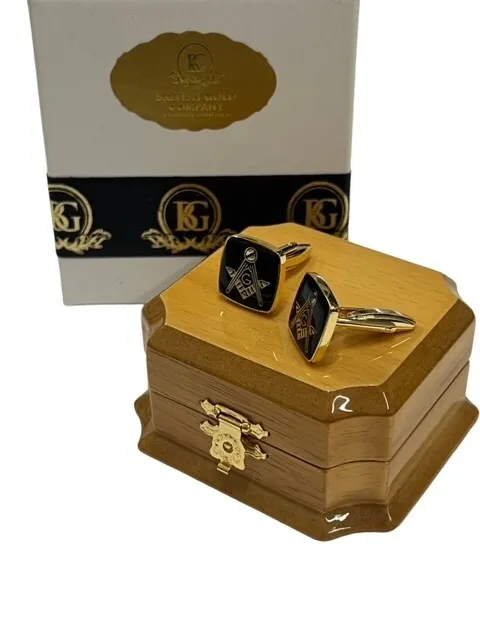 7 watchers
7 watchers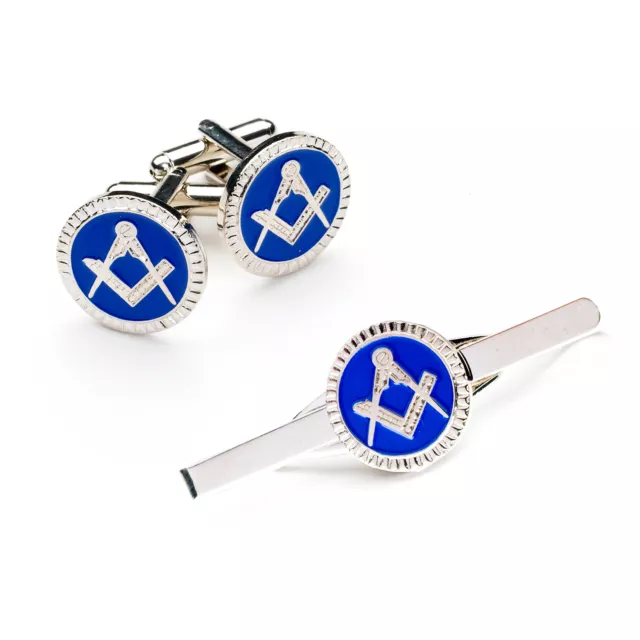 5 watchers
5 watchers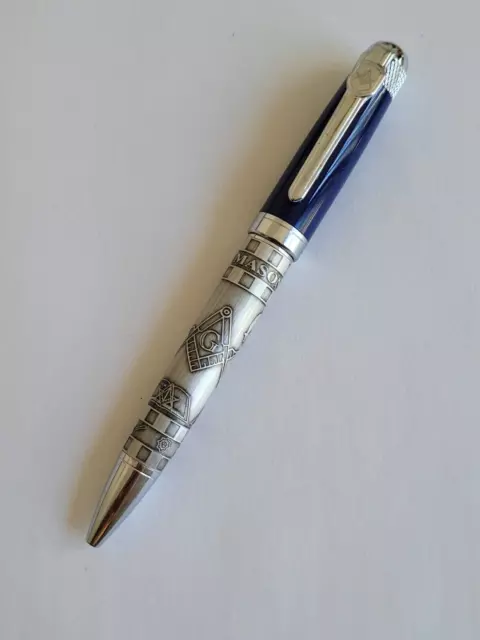 15 watchers
15 watchers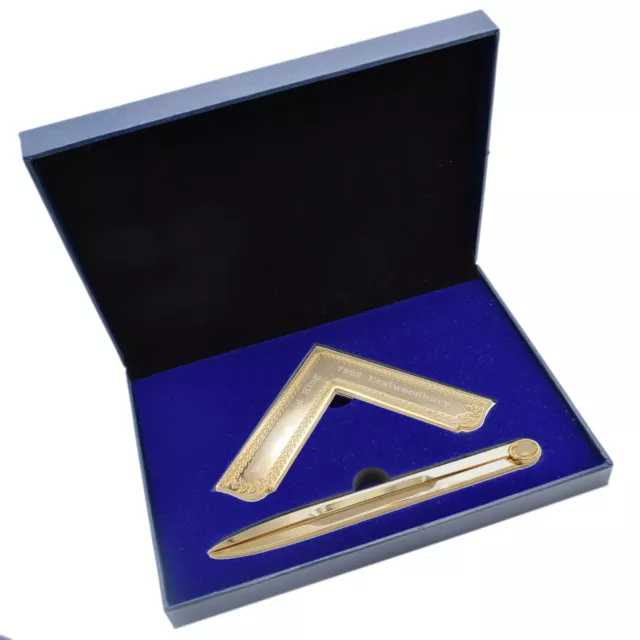
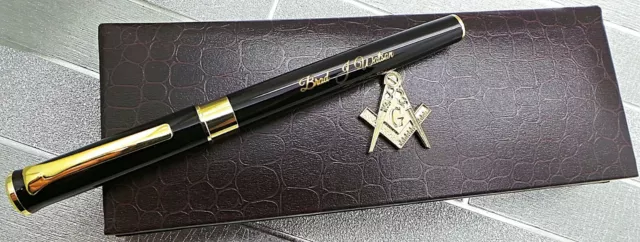 8 watchers
8 watchers 1 watcher
1 watcher 4 watchers
4 watchers 3 watchers
3 watchers 1 watcher
1 watcher 2 watchers
2 watchers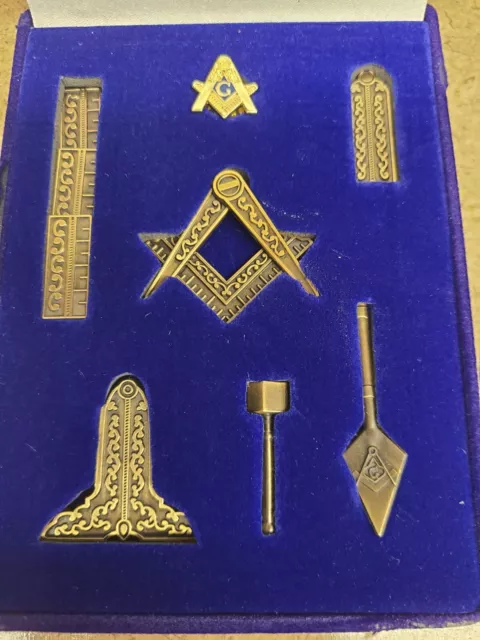
 15 watchers
15 watchers 1 watcher
1 watcher 36 watchers
36 watchers 4 watchers
4 watchers 84 watchers
84 watchers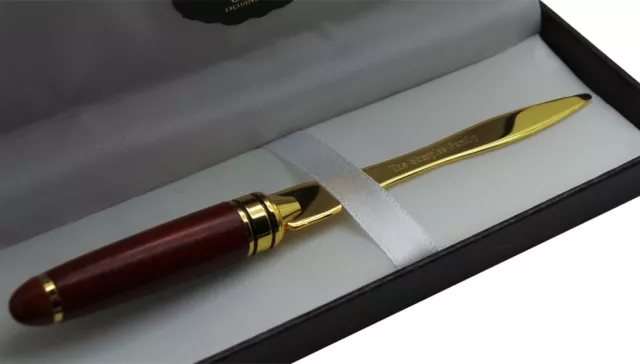 1 watcher
1 watcher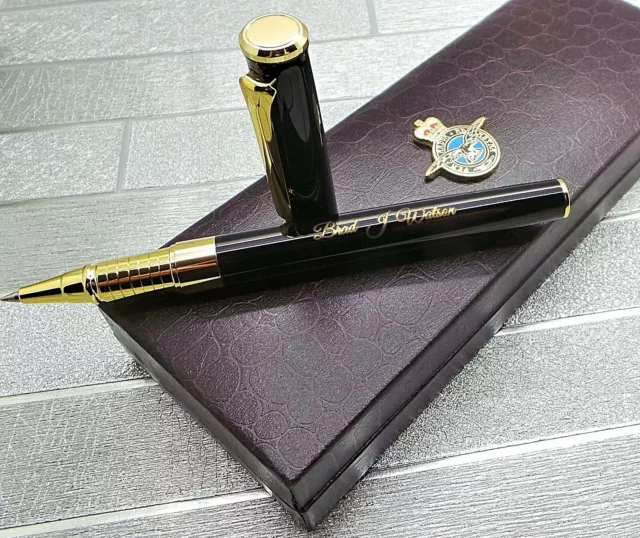 2 watchers
2 watchers 1 watcher
1 watcher

 1 watcher
1 watcher 3 watchers
3 watchers 2 watchers
2 watchers

